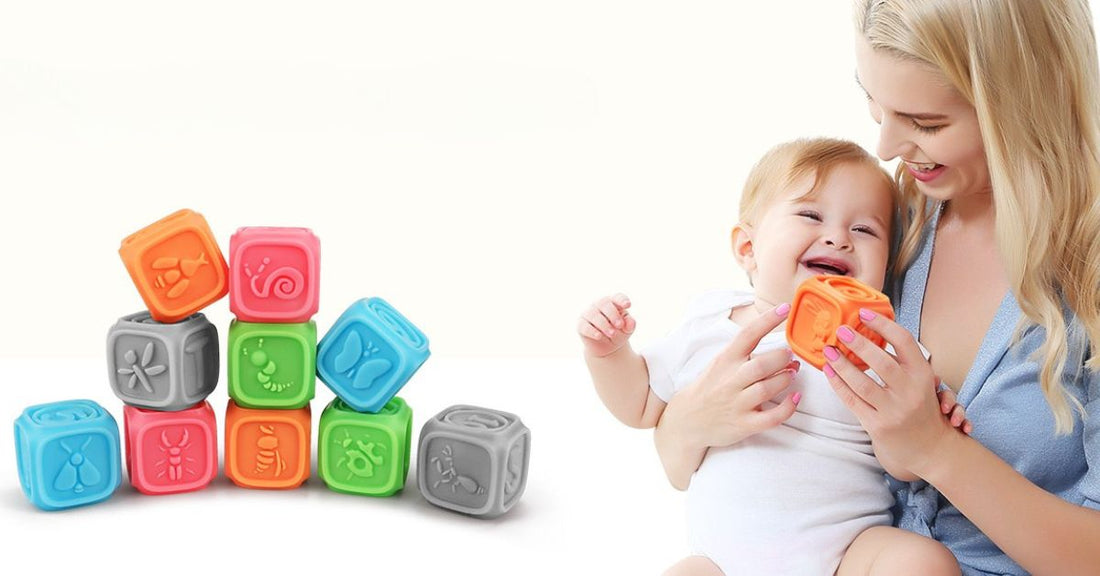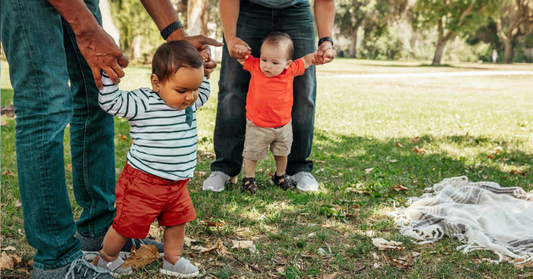Fine vs. Gross vs. Small vs. Large Motor Skills: What's the Difference and Why Does It Matter?

Fine motor skills involve precise movements using small muscles, like grasping toys or drawing, while gross motor skills use larger muscles for crawling and walking.
As a new parent, you may feel overwhelmed by numerous parenting terms and definitions. With so many developmental milestones to track, it's easy to become confused by the terms "fine," "gross," "small," and "large" motor skills. Without clearly understanding these differences, you risk overlooking critical developmental signals or failing to provide appropriate activities for your baby's growth. Thankfully, this article clearly explains the differences between these motor skills and provides practical suggestions, allowing you to confidently guide your child's development.
What's the difference between fine, gross, small, and large motor skills?
- Fine motor skills refer to precise movements involving smaller muscles, primarily in hands and fingers. Examples include grasping toys, picking up small items, writing, and buttoning clothes.
- Gross motor skills involve larger muscle groups in the arms, legs, torso, and neck. Examples include sitting, crawling, walking, running, and jumping.
- Small motor skills are essentially synonymous with fine motor skills, emphasizing activities involving smaller muscles.
- Large motor skills refer to gross motor skills, emphasizing whole-body movements and activities requiring larger muscle groups.
While understanding these basic definitions is helpful, truly supporting your child's healthy growth requires deeper knowledge. Let's take a closer look at each type of motor skill, discover practical tips and detailed comparisons, and clarify how these skills directly influence your child's daily life and developmental trajectory.
What exactly are fine motor skills, and how can you support your baby's fine motor development?
New parents often underestimate the importance of fine motor skills in early childhood, unaware that these skills lay the foundation for critical future activities such as writing, dressing independently, and self-feeding. Neglecting fine motor skills can cause developmental delays, frustration, and reduced confidence later in life.
Fine motor skills involve small, precise movements using muscles in your child's fingers, hands, and wrists. To effectively support your baby's fine motor skill development, consider these age-appropriate activities:
- 0-6 months: Allow your baby to grasp and squeeze soft baby toys.
- 6-12 months: Encourage picking up small, safe objects like finger foods or soft blocks.
- 1-2 years: Provide crayons for scribbling, blocks for stacking, and utensils suitable for small hands.
Consistent practice through play will naturally and effectively boost your child's fine motor development.
What are gross motor skills, and how can you encourage your baby's gross motor development effectively?
Some parents mistakenly assume their babies naturally develop gross motor skills without assistance. However, neglecting intentional support can lead to slower progress or missed developmental milestones, potentially impacting your child's physical confidence.
Gross motor skills involve movements utilizing larger muscle groups in your child's arms, legs, trunk, and neck. Encourage healthy gross motor development with these activities:
- 0-6 months: Regular tummy time to strengthen neck and back muscles.
- 6-12 months: Create stimulating, safe environments that encourage crawling, rolling, and independent sitting.
- 1-2 years: Engage your child in activities like walking, running, climbing, and playing easy ball games.
Active participation consistently boosts your child's gross motor abilities and overall physical confidence.
Fine vs Gross motor skills—What's the key difference, and why is it important for parents to understand clearly?
Confusion between fine and gross motor skills can hinder your ability to accurately track and understand developmental milestones. Misunderstanding these skill differences can delay necessary interventions, affecting your child's developmental outcomes.
Clearly distinguishing between fine and gross motor skills helps greatly:
| Aspect | Fine Motor Skills | Gross Motor Skills |
|---|---|---|
| Muscle Groups Used | Small muscles (fingers, hands, wrists) | Large muscles (arms, legs, torso, neck) |
| Key Activities | Holding small objects, drawing, buttoning | Crawling, walking, jumping, climbing |
| Developmental Importance | Critical for handwriting, self-feeding, dressing independently | Essential for overall physical fitness, balance, coordination |
Clearly understanding these distinctions enables you to effectively support your child's balanced growth and development.
Are "Small Motor Skills" and "Large Motor Skills" just another way of saying "Fine" and "Gross Motor Skills"?
The interchangeable use of these terms can confuse parents, making it challenging to track developmental milestones accurately. Misunderstanding can lead to unnecessary anxiety or missed opportunities for developmental support.
In practice, "small motor skills" and "fine motor skills" typically refer to the same concept, highlighting precise movements involving smaller muscle groups. Likewise, "large motor skills" and "gross motor skills" describe movements involving larger muscle groups and whole-body coordination. Understanding these interchangeable terms clearly helps parents confidently track and support their child's developmental progress without confusion.
How can you assess if your baby's motor skill development is on track, and when should you seek professional help?
Parents often worry about their child's motor skill development but lack clear guidelines for evaluation. This uncertainty can cause unnecessary stress or, conversely, delay necessary early interventions.
Monitor these general motor milestones as a guide:
- By 6 months: Steady head control, rolling over independently.
- By 12 months: Sitting without assistance, beginning to crawl.
- By 18 months: Walking independently, stacking blocks or simple objects.
Seek immediate professional evaluation or advice if you notice consistent delays, unusual muscle stiffness or floppiness, lack of coordination, or regression in previously achieved skills.
Conclusion
Clearly understanding the distinctions between fine, gross, small, and large motor skills is essential for supporting your baby's comprehensive developmental journey. By accurately recognizing each motor skill type, you empower yourself to nurture your child's growth effectively. Integrating intentional supportive activities into daily routines ensures your child's readiness for future tasks and fosters balanced physical and cognitive development.







0 comments